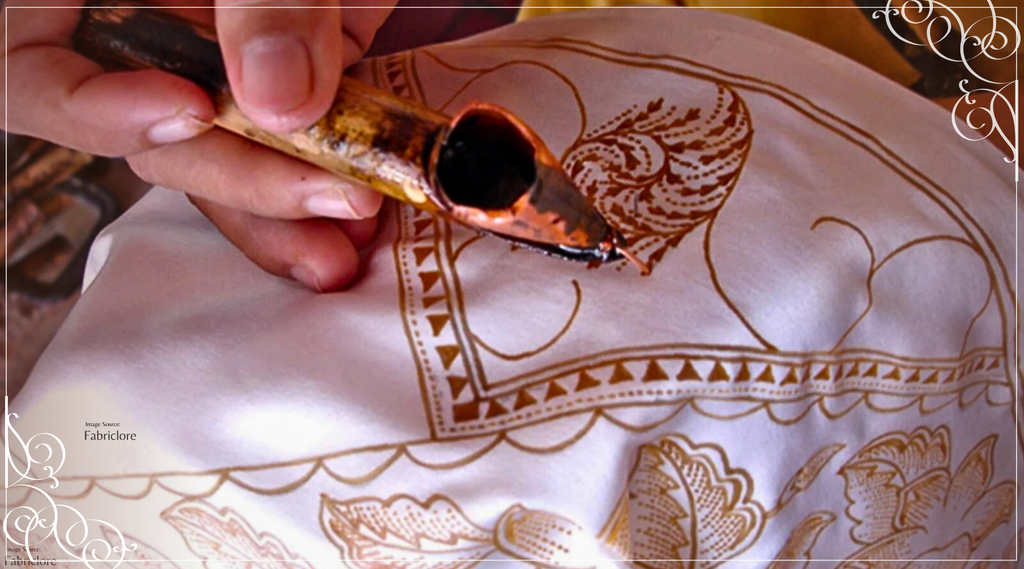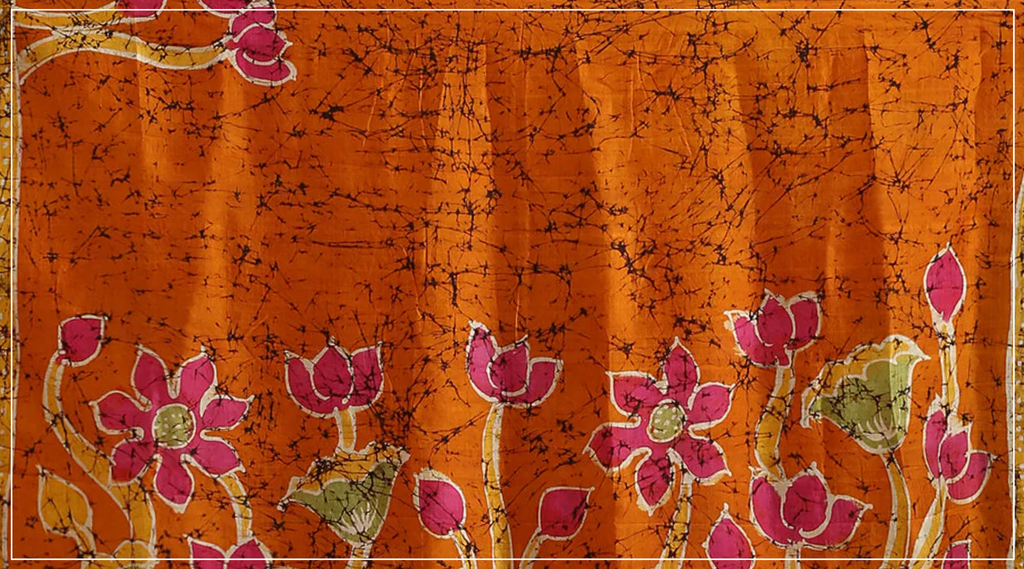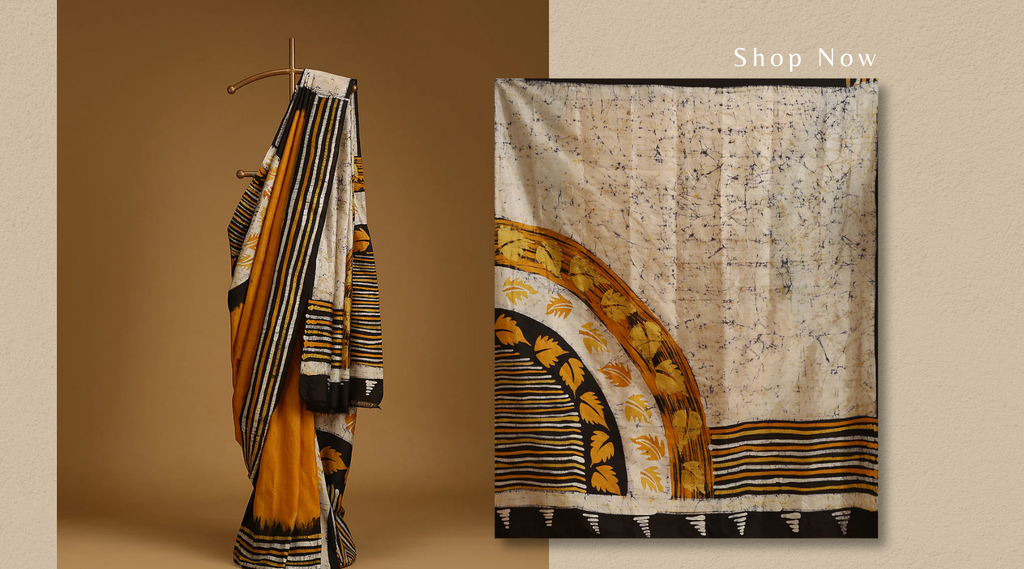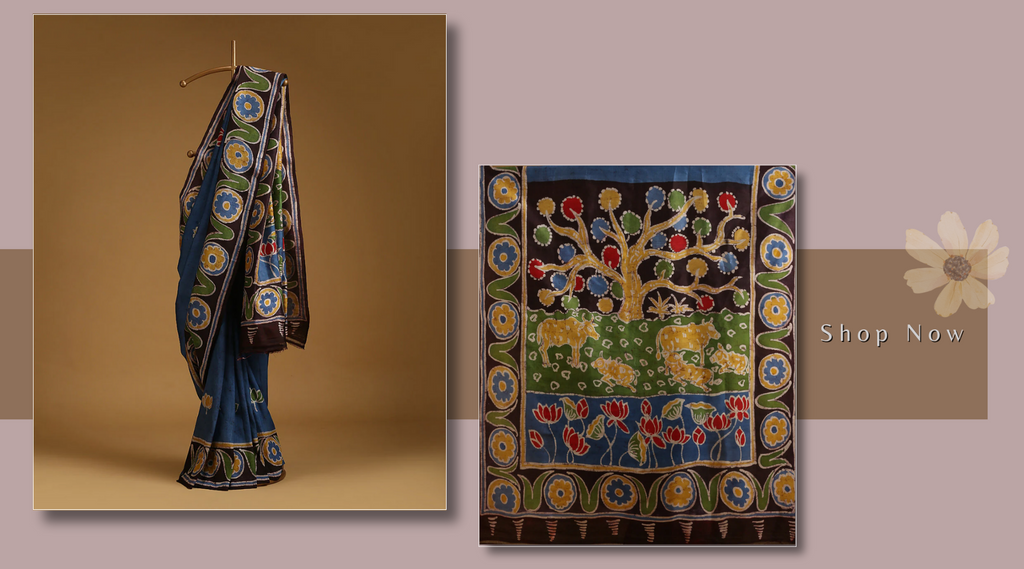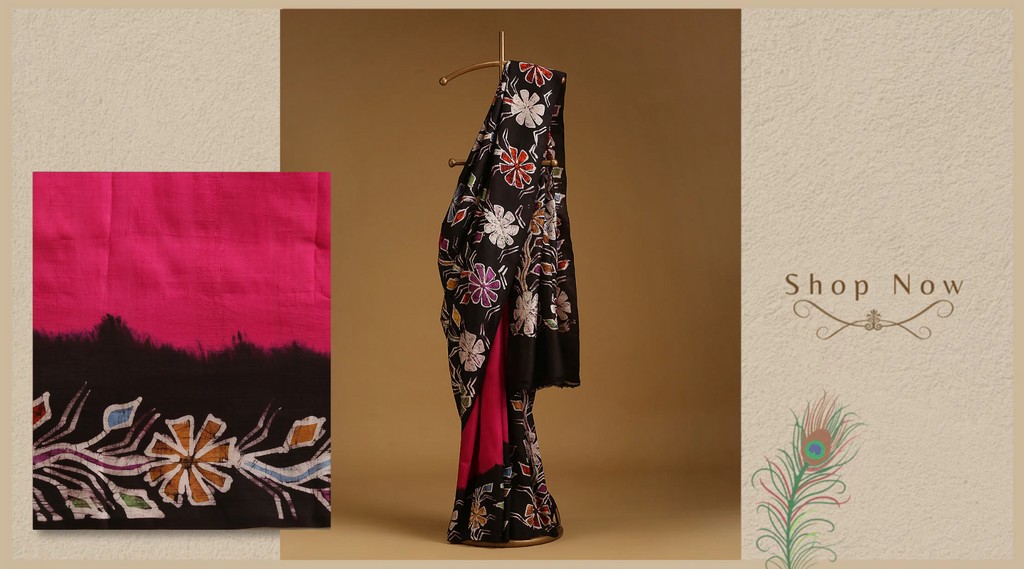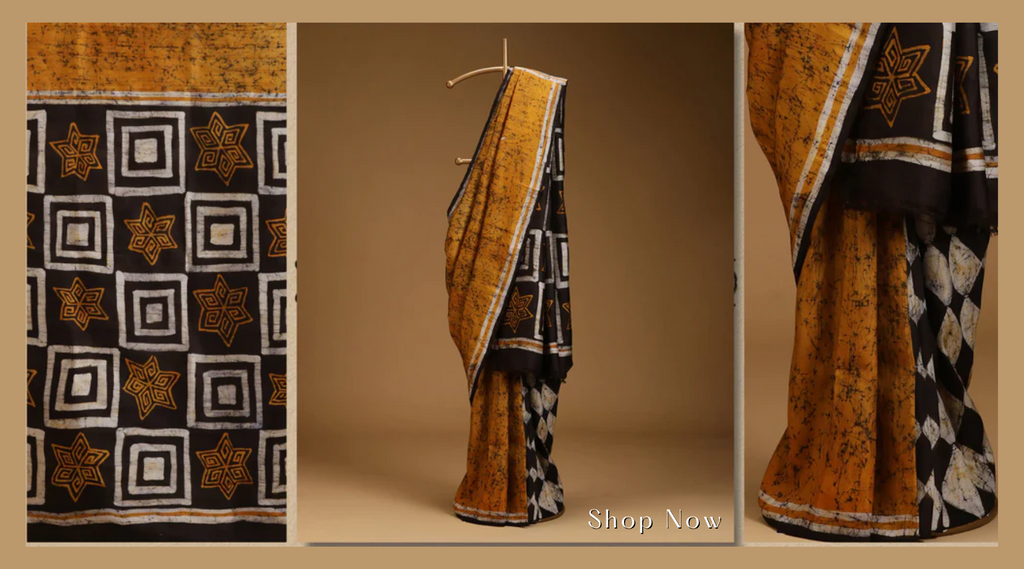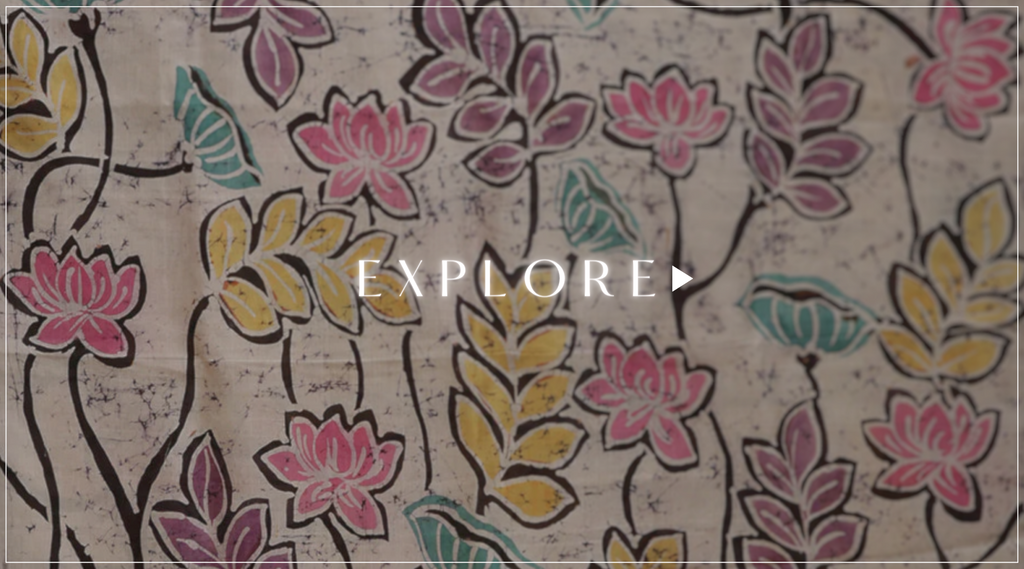Shantiniketan in West Bengal is the art hub for Batik. The ancient craft of Batik is preserved at Visva -Bharati University in West Bengal, an institution founded by the Nobel Laureate Rabindranath Tagore.
Few might be aware that Rabindranath Tagore went to Java, Indonesia, in 1927, and returned with an exquisite dyeing technique called BATIK. He introduced it in Shantiniketan and it spread across India. Batik has influenced West Bengal, especially in the quintessential ALPONA motifs and other typically traditional Bengali art motifs.
The creation of Batik saris is a three-stage process of waxing, dyeing, and de-waxing (removing the wax). There are also several sub-processes like preparing the cloth, tracing the designs, stretching the cloth on the frame, waxing the area of the cloth that does not need dyeing, preparing the dye, dipping the cloth in dye, boiling the cloth to remove wax and washing the cloth in soap.
The word Batik actually means " wax writing" and that is basically what Batik is all about. It is a way of decorating cloth by covering a part of it with a coat of wax and then dyeing the cloth. The waxed areas keep its original color and when the wax is removed the contrast between the dyed and undyed areas makes the pattern.
The art of making a Batik Sari has come a long way from a mere handicraft. Batik was considered in the past as a fitting occupation for aristocratic ladies whose delicately painted designs based on bird and flower motifs were a sign of cultivation and refinement just as fine needlework.
Attributes of Batik:
• The key revealing factor of ‘Batik’ is the attractive splinters that you can see through the design, which make the design more appealing, commonly known as "CRACKS"
• Remember, the ‘Batik’ on either side of the sari will be palpable; if the design on one side is more intense than the other, probably that piece may be a duplicate one!!
• Fabrics that are tagged as ‘natural fibres’ such as linen, cotton, and silk are commonly used for ‘Batik’ designs; this is due to the entailed boiling process.
• Duplicate or "Printed" Batik may look elaborate and fine; authentic ones are those that are hand done and so there will be little bit of daubs in the design.



